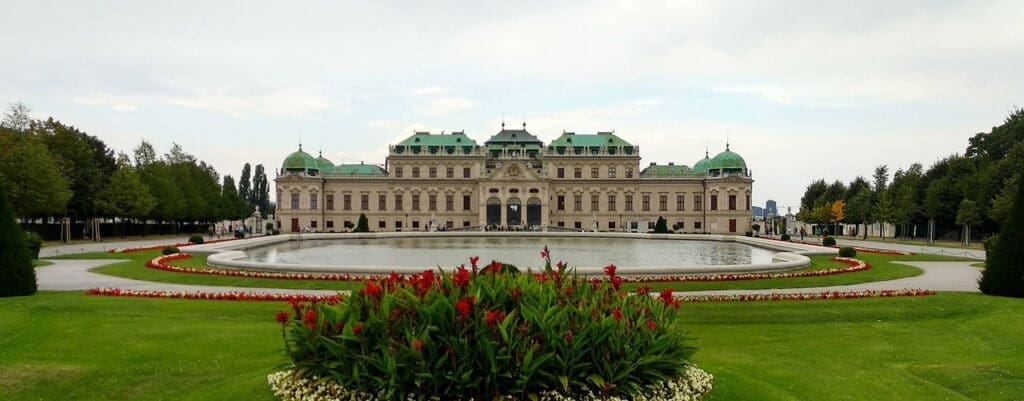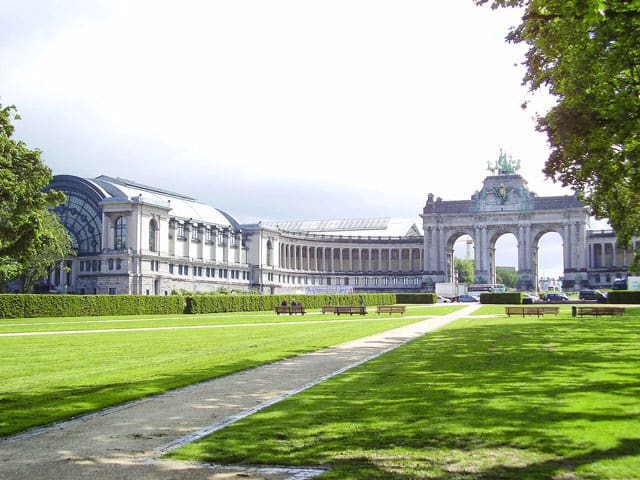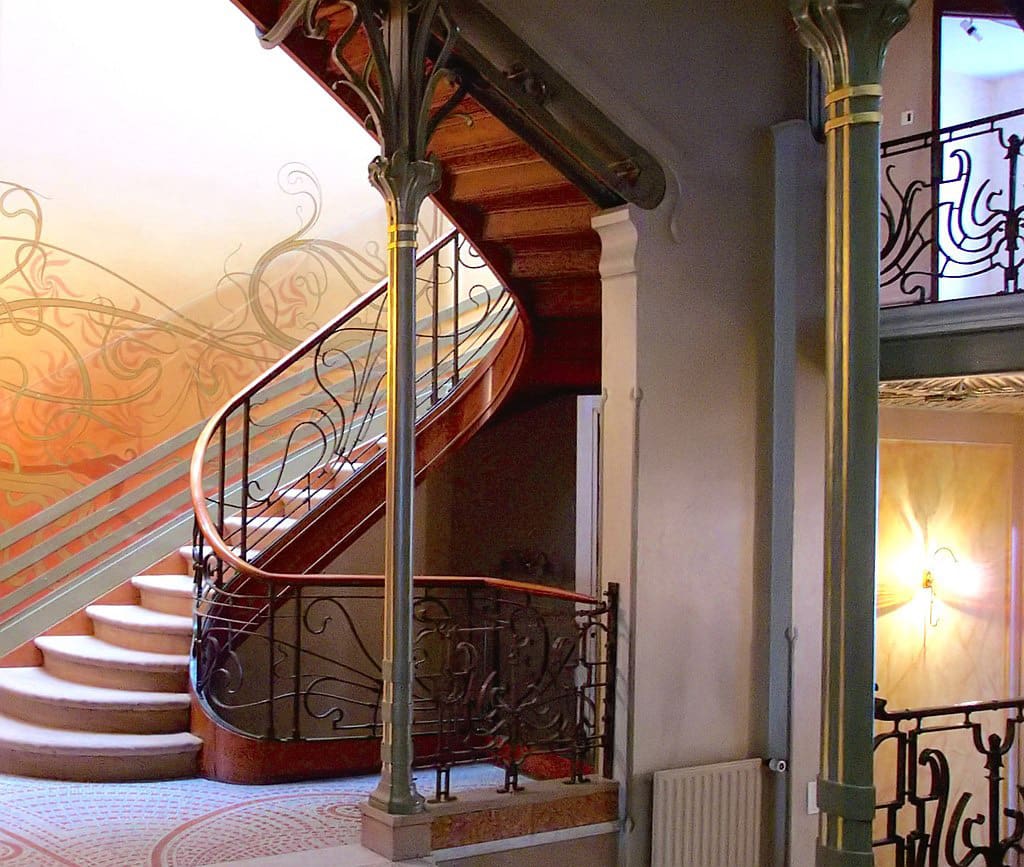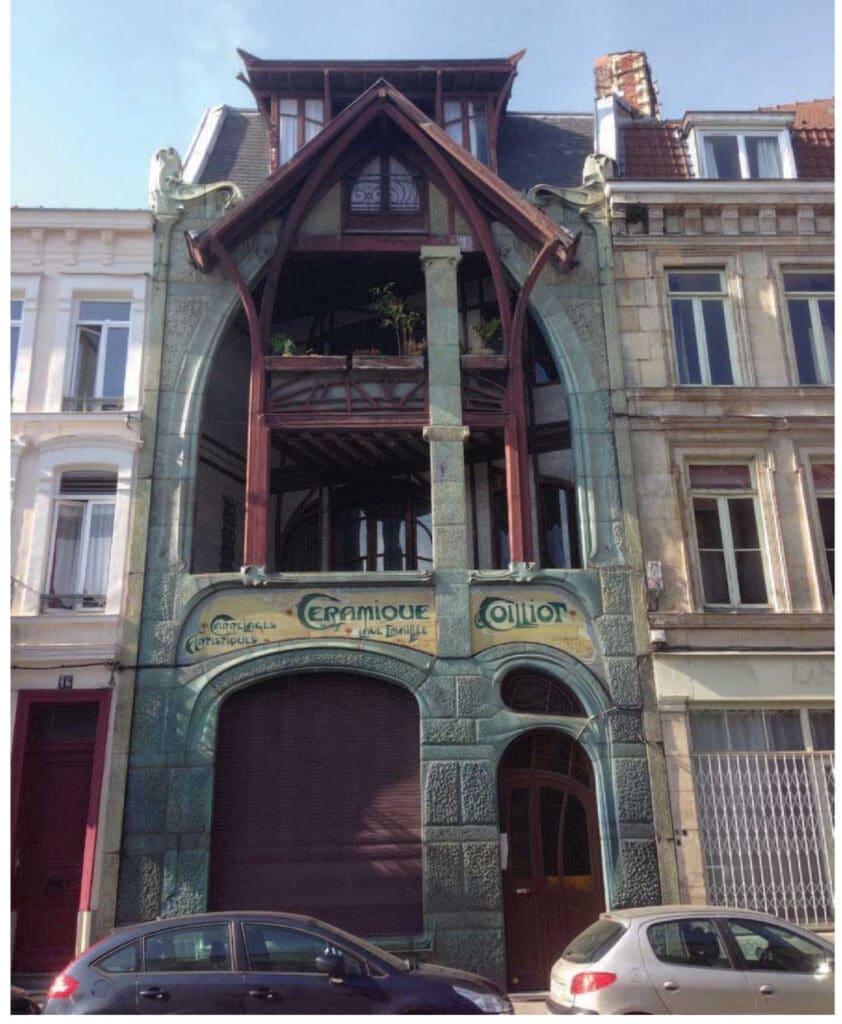Paradigm shift in architecture: Neoclassicism, Eclecticism, and art Nouveau is the Tenth article of a series of articles investigating the paradigm shift in architecture. In the previous Nine articles, I have discussed several different papers for academics, researchers, and professionals who have different perspectives on the paradigm shift in architecture.
This article is the continuity of my investigation of the reality of the paradigm shift, its effect on the work environment, and its real characteristics. Here I will start as indicated in my previous articles from ancient history to modern-day’s architecture. The Neoclassicism, Eclecticism, and art Nouveau architecture period is the subject of my discussion here.
I have discussed in the previous article the roots of renaissance architecture. The return to the past and building on the principles of Vitruvius the Italian architect and engineer treaties as well as the Greek architecture. Renaissance architecture was a set of general treaties or guidelines for architectural design. Symmetry, proportion, and harmony (rhythm) are general ideas that any architect could apply in the architecture of any building. These are abstract guidelines and ideas that do not include any specific detail of how to apply proportion or harmony. The subsequent architecture of baroque and rococo applied more detail to the main elements of renaissance architecture to clear out the rigid façade shapes. The rococo added more dynamic features to renaissance architecture.
Neoclassicism architecture had its roots in Italian art. The art debate between international scholars in Italy led to the initiation of neoclassicism between the 17-18 centuries. The first contributor is Cardinal Alessandro Albani who directed a librarian to collect and organize his work of poetry and sculpture collection. This collection was the first art historical study that inspired other artists in Europe in Austria and Germany.
Alison1 indicates that the tax increase on the public by the monarchy in France to recover the bankruptcy of the public treasury was the cause of the French revolution and the start of neoclassicism. Neoclassicism arose in France and passed through two phases. First, the early neoclassical style was called the Louis XVI style. Second, under the first French empire of Napoleon is called the empire style. In the 18th century, the establishment of the French academy in Paris and the debate circled in it about art based on Italian renaissance models was the first academy to teach architecture.
Mallgrave2 says Fischer Von Erlach the Austrian architect was the first contributor to Neoclassicism and enlightenment. He was trained in late Baroque architecture in Italy and published the first textbook in architecture. The book is about the history of architecture. His architecture carries the characteristics of Neoclassicism architecture. One of the amazing works is the Schönbrunn Palace in Vienna. See figure 1.

From the general guidelines and principles of renaissance architecture to more specific architectural elements of Neoclassical architecture. Alison indicates that the major characteristics of Neoclassical architecture are Symmetry, clarity, Use of the Ionic-Doric-Corinthian column orders, Use of triangular pediments above colonnades, balustrades running through the rooftop, regularly organized windows and doorways, centralized dome, and white stone and whitewashed brick.
The publication of Palladio’s book, the four books of architecture, was the central importance in English villa design. Palladio villa’s design and his style Palladian style spread across Europe and USA. The Georgian style and the regency style both grew out of the Palladian style in Great Britain.
Notable architects throughout Europe adopted neoclassical architecture in their work like Karl Friedrich Schinkel’s buildings in Berlin, Juan de Villanueva’s work in Madrid, and Vasili Ivanovich Bazhenov’s architecture in Saint Petersburg. The neoclassical architecture is observed clearly by its characteristics in Juan de Villanueva’s royal observatory building in Madrid. See figure 2.

Mallgrave2 illustrates that there was a debate in the architect’s circle about the relevance of teaching Vitruvius treaties. Many architects of the neoclassical period and enlightened generated notes and treaties which were translated into books later on. Carlo Lodoli an Italian architectural theorist in his projected treaties he focused in book 1 on “new forms and new terms”. In book 2 he focused on “proper function and form are the only two final scientific aims”.
In the debate circle of neoclassicism, a focus is on the designer’s role and subjecting design to the laws of reason. In this event, the architects are given full freedom and at the same time impose some restraints.
A new direction of setting personal architectural rules and guidelines based on academic training or influence by other notable architects was spread out in the architect’s circle of this period of architecture.
In Neoclassical architecture, there was an establishment of an architectural academy as a continuity to the renaissance unformal architecture teaching. New schools of thought are introduced by many notable architects within Neoclassical architecture.
Due to the wide debate about the role of the architect and the way architecture should be a paradigm shift appeared here. Because architects started to emphasize the importance of setting their desires, views, thinking, and approaches about how they should design and how should architecture as a physical object looks. This is regardless of the adopted elements or characters of any architecture type from the previous timeline.
Eclecticism in architecture has its roots in Greek and roman Philosophy and thinking. Greek Philosophy had various schools including its directions in thinking about many aspects of the debate in philosophy like attaining knowledge. These schools include dogmatism, stoicism, epicureanism, and skepticism. Zeller3 in his discussion about the roots of eclecticism in philosophy says that eclecticism is brought to life from the skeptical school. The principles and characteristics of the eclectic school are described as follows:
“If it be required that the individual shall choose out of the various systems that which is true for his own use, this presupposes that each man carries in himself the standard for decision between true and false, and that truth is directly given to man in his self-consciousness; and it is- precisely in this presupposition, that the individuality and importance of the eclectic philosophy seem chiefly to lie”
From this extract, it is obvious that there was since the Greek and roman periods an approach to liberate man and his thought. He has the right to decide the truth based on his self-consciousness.
Returning to our subject of eclecticism in architecture it appeared since the debate on the value of the Greek taste and roman culture. Giovanni Battista Piranesi in his defense of the great Latin culture cultivated for eclecticism. The architect’s right to draw upon different cultures and styles for his creation.
After the French revolution and the American revolution, the Ecole de beaux-art was established. Four teachers who studied at the French academy in Rome challenged the Neoclassicism of the old regime. They wanted to break away from this old fashion style to create a new architecture based on the medieval ages and renaissance architecture. A new architecture that has its roots in French architecture and is based on French models. Cinquantenaire/Jubelpark buildings and entrance in Brussels represent an excellent example of this architecture. See figure 3.

The beaux art in architecture is the eclecticism in architecture. The main characteristic of this architecture is the way architects design the building from the exterior. It’s the use of flat roofs, the raised first floor, the hierarchy of internal space, arched windows and pedimented doors, Symmetry, classical details, the use of sculpture in the façade, and grand entrances.
In eclectic architecture, we have observed the continuous emphasis on the role of the designer and the Notion of the liberty of man. Neoclassicism and eclecticism are not very different in terms of architectural work and the buildings architects create. Eclectic architecture provides the architect more freedom to create what he thinks is the proper form and function by using multiple characters from a different timeline in history. Here the architect could, and in many cases, it’s true, focus on the local architectural character of the country as what happened in France. Another example of eclectic architecture is the central university library in Bucharest- Romania with some variation from the eclectic architecture. see figure 4

Eclectic architecture and the architects who adopted this type of architectural design though there was liberty in design the architects are less creative in terms of creating new forms and functions. They follow building functions from other periods and ready-made forms and details as well. Here the architects and eclectic architecture brought to the surface as I may say architects that can gather and combine various architectural elements without making Naïve or ugly architecture. It seems to me similar to a management task in architecture design.
Art Nouveau architecture is located in France-Belgium. The term is meant to be fine art. Many fine art disciplines found their way into art nouveau architecture. These disciplines include graphic designers, interior designers, and magazine designers.
The art movement considered that the historical styles are no longer valid and appropriate for the existing lifestyle. The advanced technology and production specifically in iron, glass, and ceramic gave the art people a wider space to invent and create something different than classical art. Franco-German entrepreneur Samuel Siegfried Bing (1838–1905), was the originator of the term l’Art Nouveau.
Anne4 presents different ideas about the art nouveau movement in art and architecture. Most art people share the opinion that a man can create innovative objects when he is liberated from classical forms and ideas. Art and architecture should respond to technological advances and use them in creating artwork and in architecture. A man should return to nature and study the natural forms and their beauty when creating artwork. Any artwork should reflect its timeline of creation and respond to people’s needs and desires in modern life. Art and architecture become influential on each other and they should reflect the spirit of the era.
Art nouveau creation was apparent in interior design and furniture by using the dynamics of the curved line of steel material. The dynamics of stained glass and the use of a variety of shapes in interior décor. The use of colored ceramic in interiors created a fascinating environment that differs dramatically than interiors of historical periods. See figure 5

The main elements of the art nouveau in architecture are the use of organic shapes and forms, organic arches, and ornaments whether inside the building or on the exterior. The forms used in this architecture simulate the shapes of leaves, flowers, and animals. The extensive use of the three main materials of iron, glass, mosaic and ceramic decoration.
It is obvious that art and architecture people feel the dominance of specific architectural principles, the monotony of created forms and facades, and the restrictions of other thinking and ideas on artists’ and architect’s work. Here art people wanted to create a personal style and for this, the notion of Individualism appeared in art and architecture circles.
Returning to my previous article (paradigm shift in architecture: renaissance, baroque, Rococo) the French art people and architects protested against the dominance and the statical architecture of the renaissance and directed to produce more dynamic architecture. This dynamic architecture by using more dynamic shapes of curved lines, sculpture in facades, and ornamental details in architectural elements. Here the art nouveau is a copy of the rococo architecture and its protest against eclecticism and neoclassicism architecture. I may say History repeats itself even in architecture and thinking. An excellent example of art nouveau architecture is presented in the design of Coilliot House in Lille see figure 6.

References
- Palmer, A.L. (2011) Historical dictionary of neoclassical art and architecture. Lanham: Scarecrow Press.
- Mallgrave, H.F. (2008) Architectural theory. Malden, MA: Blackwell Pub.
- Zeller, E. (2010) History of eclecticism in greek philosophy. Nabu Press.
- Anderson, A. (2020) Art Nouveau architecture. La Vergne: The Crowood Press.
- Pehnt, W. (1968) Encyclopedia of modern architecture. New York: Harry Abrams.
[…] the external form is composed of two styles the neoclassical style simulating some classical details from the Renaissance architecture in the parapet, and columns in […]
Oh my goodness! an excellent post dude. Thanks However We’re experiencing problem with ur rss . Don’t know why Can not sign up to it. Possibly there is any person getting identical rss problem? Anybody who knows kindly respond. Thnkx
[…] in different villa architecture designs and the area comprises nowadays of many styles ranging from neoclassical architecture to Non style […]
Thans for ones marvelous posting! I really enjoyed reading it, you’re a great author.I will make
certaiin to bookmark your blog and may come back at some point.
I want to encouragbe yourself to continue youir great job, have a nice day! https://odessaforum.biz.ua
Thank you dear.